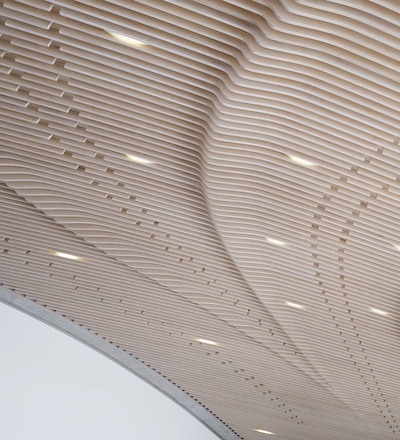The Villa Ypsilon, a domed residence built by LASSA architects Theo Sarantoglou Lalis & Dora Sweijd, overlooks an olive grove on the southern Peloponnese Peninsula of Greece.
It is situated on top of a hill so that it has breathtaking views of the surrounding countryside, mountains, and coastline. Lalis says that the house’s height is restricted to the top of the olive trees in order to integrate with the landscape.
The green roof of the summer residence is Ypsilon-shaped and serves as an extension to the terrain. The roof’s branches create three distinct courtyards that are great for enjoying the views and walking. Three courtyards are also framed by the concrete shell that forms the roof. One has a spectacular, eye-catching swimming pool with sun deck and another features a gravel patio. The last includes a sunken seating area.
In an interview with Dezeen, Lalis and Sweijd stated that the design of the concrete shells and courtyards’ orientation create shadows at certain times of day. The western courtyard was meant to be used in mornings and the eastern for afternoons. While the south is for late afternoon, they explained how it was intended for afternoon sitting.
The architects continue, “We are interested by the idea of form integration.” The architects explain that form integration can result from overlapping and specific design decisions. The vaulting concrete shell is structural and has bisecting views. Its sloping [form] makes the building walkable. This is an example of environmental optimization.
There are two main areas to the interior. The first is a private area that contains three bedrooms and two bathrooms, with views to the east. The second is a common area that includes the living room and kitchen, with southern views and access from all three courtyards.

With the combination of the concrete shell and the cross-ventilation strategy and the planted roof, the need for a mechanical cooling system was eliminated. Due to the project’s remoteness, budget limitations and non-standard geometry, a construction strategy that required off-site prefabrication as well as self-assembly was necessary. The LASSA team was able to reduce construction time to seven month without compromising the quality and design of the home.
Lalis says, “We bought a CNC machine that allowed us to do extensive prototyping and produce non-standard elements.” This included concrete shell formwork, the living room lost formwork/acoustic ceiling and custom window frames. It also included interior furniture, partition systems, landscape, and pool forms.
This allowed for the use of local materials such as concrete, terrazzo, and marble while limiting the usage of off-the-shelf, commercial products.
This article was first published in AQUA Magazine’s March 2023 issue. It is the best resource for builders, retailers, and service professionals in the spa and pool industry. All industry professionals can subscribe to the magazine for free. Subscribe by clicking here



